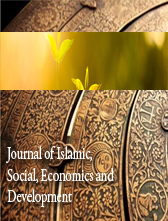LEVERAGING THE HERITAGE SIGNIFICANCE OF THE CESME IN ISTANBUL TO CREATE A QUALITY URBAN PLACE
Abstract
Istanbul's public fountain (cesme) has the potential to revitalise urban neighbourhoods following its significance as an Islamic heritage. Nevertheless, more are becoming out of favour since their decline as functional objects. Therefore, it is pertinent to see how we can reuse them as a generator for place-making. Can the cesme be a generator of quality urban neighbourhood revitalisation? Although much research has addressed the cesme's typology and topology, only some address the object from the Islamic city planning perspective. This article is a serious attempt to address its Islamic heritage significance and – new – meaning in the urbanity of Istanbul. The study in this article was carried out by adopting a participatory immersion study. Firstly, the urban experience was recorded and reflected upon to assess its vitality. This is followed by a comparative analysis of the repurposed cesme found during the field study. As an urban object, the cesme still has a strong cultural attachment to Istanbul. By returning them to the public with a repurposed use, a new meaning is appropriated for the cesme. Subsequently, the public place it defined is given new vitality. This new perspective on cesme and its potentiality can add to the approach to heritage-led regeneration. By repurposing the traditional workplace into a third place, its meaning as a social production continues to the current time.













